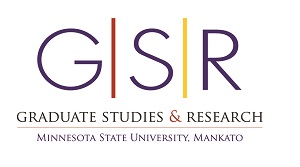The Impact of Active Aerodynamics on Motorcycles Using Computational Fluid Dynamics
Loading...
Document Type
Event
Description
Motorcycles are mostly utilized by commuters whose requirements are cheap and affordable transportation from point A to point B. Motorcycles also provide means to tour various places and have a leisure time for the majority of motorcyclists. Unfortunately, with pros also come cons such as accidents which are fatal or life-taking. According to motorcycle crash statistics produced every year, the primary causes for motorcycle crashes are facing unexpected obstacles in the path causing collisions due to insufficient braking time. Thus, this thesis serves as a mean to overcome this issue and provide a technological solution to the world of motorcyclists.
The thesis initially covers the introduction to the history of Computational Fluid Dynamics and Simulations. Consequently, the modelling aspects of the motorcycle and the active aerodynamics concepts are studied and explained in detail in conjunction with the usage of PTC Creo 3.0. The subsequent chapters explain the Computational Fluid Dynamics simulations setup, processing and post processing of the results utilizing ANSYS Workbench and its modules Design Modeller, Mesh, FLUENT and Post Process. Finally, the rapid prototyping using Stratasys UPrint 3D Printing and wind tunnel validation aspects of the project are discussed leading to key conclusions and discussions.
This thesis is aimed to be an innovation to help protect motorcyclists from fatalities and also stands as a means to demonstrate engineering capabilities in producing real-world solutions through low-cost and viable simulation sciences.
Keywords
computer aided design, computational fluid dynamics, rapid prototyping, wind tunnel testing
Degree
Master of Science (MS)
Department
Automotive and Manufacturing Engineering Technology
College
Science, Engineering and Technology
First Faculty Advisor's Name
Craig Evers
First Faculty Advisor's Department
Automotive and Manufacturing Engineering Technology
First Faculty Advisor's College
Science, Engineering and Technology
Recommended Citation
Sripathi, V. A. & Shamkumar, M. J. (2017, April 17). The Impact of Active Aerodynamics on Motorcycles Using Computational Fluid Dynamics. Presented at the 2017 Graduate Online Symposium, Mankato, MN. http://cornerstone.lib.mnsu.edu/gos/2017/presentation/10
Creative Commons License

This work is licensed under a Creative Commons Attribution-NonCommercial-No Derivative Works 4.0 International License.
Presentation Handout
543045042 - 1_z9rr5eei - PID 812561.txt (14 kB)
Captions in txt format
English Auto Generated (10).srt (26 kB)
Captions
The Impact of Active Aerodynamics on Motorcycles Using Computational Fluid Dynamics
Motorcycles are mostly utilized by commuters whose requirements are cheap and affordable transportation from point A to point B. Motorcycles also provide means to tour various places and have a leisure time for the majority of motorcyclists. Unfortunately, with pros also come cons such as accidents which are fatal or life-taking. According to motorcycle crash statistics produced every year, the primary causes for motorcycle crashes are facing unexpected obstacles in the path causing collisions due to insufficient braking time. Thus, this thesis serves as a mean to overcome this issue and provide a technological solution to the world of motorcyclists.
The thesis initially covers the introduction to the history of Computational Fluid Dynamics and Simulations. Consequently, the modelling aspects of the motorcycle and the active aerodynamics concepts are studied and explained in detail in conjunction with the usage of PTC Creo 3.0. The subsequent chapters explain the Computational Fluid Dynamics simulations setup, processing and post processing of the results utilizing ANSYS Workbench and its modules Design Modeller, Mesh, FLUENT and Post Process. Finally, the rapid prototyping using Stratasys UPrint 3D Printing and wind tunnel validation aspects of the project are discussed leading to key conclusions and discussions.
This thesis is aimed to be an innovation to help protect motorcyclists from fatalities and also stands as a means to demonstrate engineering capabilities in producing real-world solutions through low-cost and viable simulation sciences.



